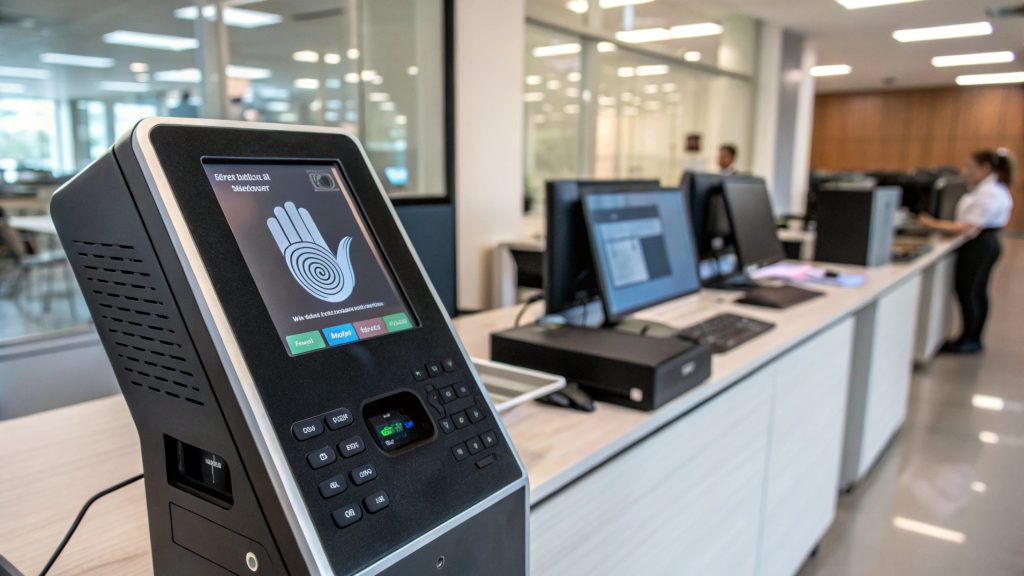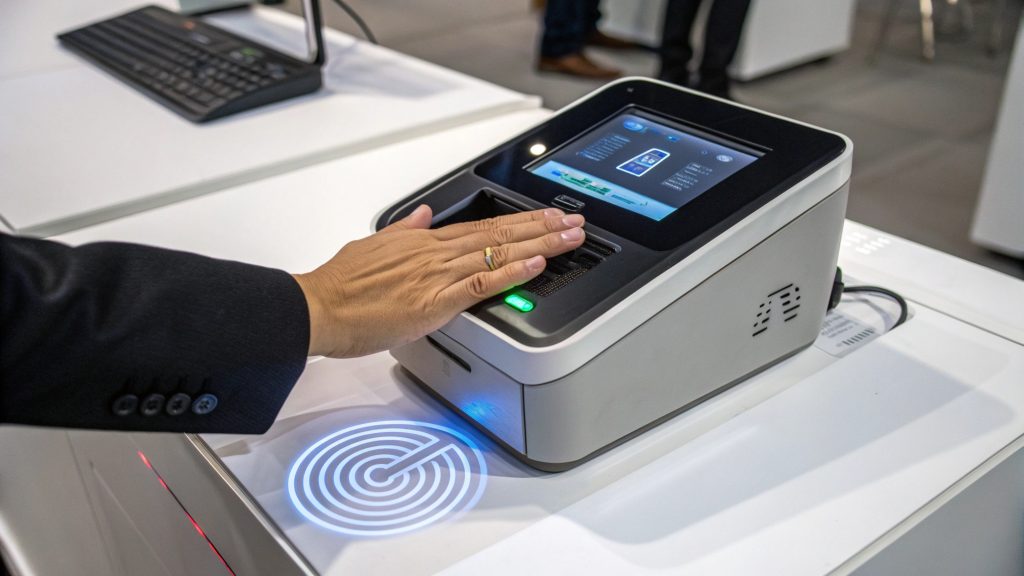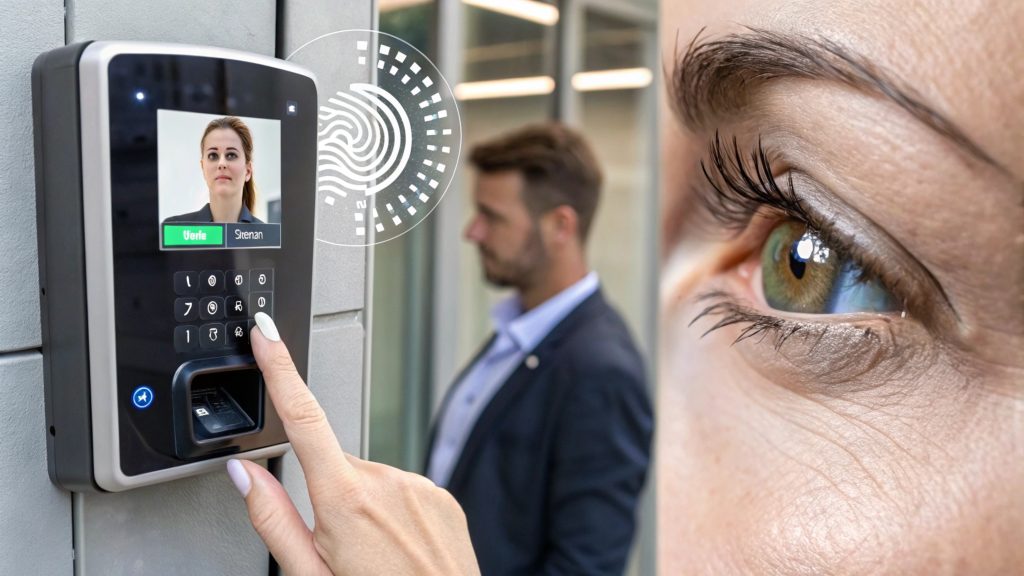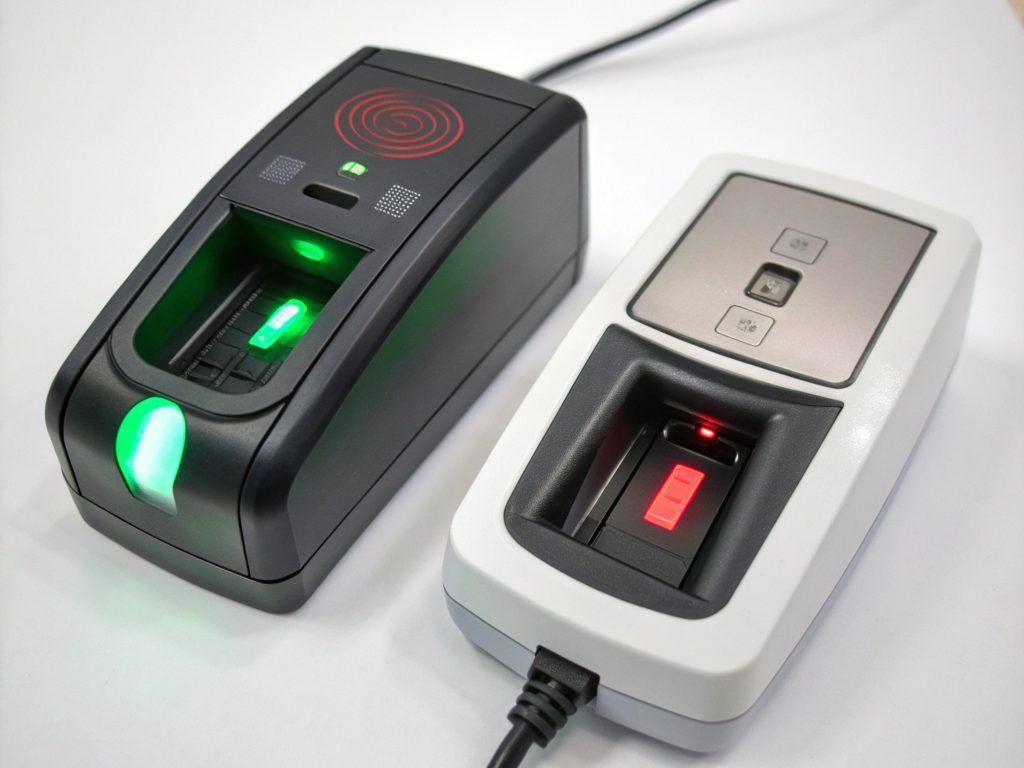Choosing the right fingerprint scanner can be confusing. Should you go for the traditional or biometric technology? Let’s break down the pros and cons of each to help you decide.
The main difference between biometric fingerprint scanning and regular fingerprint scanning is that the former integrates additional recognition methods like facial or iris scanning for enhanced security, while regular fingerprint scanning relies solely on fingerprint patterns.
Now that we’ve highlighted the main differences, let’s dive into each technology and explore their strengths and weaknesses in detail.
What is the Difference Between Biometrics and Fingerprinting?
Understanding the difference between biometric fingerprint scanning and regular fingerprint scanning is key to choosing the right technology for your needs.
Biometric fingerprint scanning incorporates additional recognition methods like facial and iris scanning for added security, while traditional fingerprint scanning relies only on analyzing fingerprints.

The term “biometrics” refers to any technology that measures unique physical characteristics to verify identity. While fingerprint scanning is a type of biometric recognition, biometrics as a whole also includes other methods like facial recognition, iris scanning, and even voice recognition.
Traditional fingerprint scanners only capture the unique patterns on your fingertips. In contrast, biometric systems can integrate multiple data points from various parts of your body, like your face or eyes, to improve accuracy and security. This multi-layered approach makes biometric fingerprint scanning more reliable in complex environments where security is critical.
For example, in high-security areas, combining facial recognition with fingerprint scanning can prevent unauthorized access even if someone attempts to spoof the fingerprint.
What Are the Disadvantages of Biometric Scanning?
Despite their many advantages, biometric systems also come with some challenges and limitations.
Biometric scanning can be expensive and raise privacy concerns, especially with the risks of false positives and negatives. It also requires specialized hardware that adds to the cost.

One of the main issues with biometric systems is their cost. Integrating advanced features like facial or iris recognition requires more complex hardware, which can be expensive for both manufacturers and consumers.
Another significant drawback is the privacy risk. Since biometric data is unique and non-replaceable, if it is hacked or leaked, the consequences can be severe. Unlike passwords, you cannot change your fingerprint or facial features once they are compromised.
Additionally, biometric systems can sometimes experience false positives or false negatives. False positives occur when the system incorrectly matches someone’s biometric data to the wrong profile, and false negatives happen when the system fails to recognize a legitimate user.
Which Fingerprint Scanner is Better?
When comparing fingerprint scanners, it’s essential to consider which type best suits your needs, whether it’s for personal use or high-security applications.
Ultrasonic fingerprint scanners are considered more secure and accurate than optical or capacitive scanners because they use sound waves to capture detailed fingerprint data.

Ultrasonic fingerprint scanners are gaining popularity due to their high accuracy and security. These scanners use high-frequency sound waves to create a 3D map of your fingerprint, making them harder to spoof than traditional optical scanners. They also work well with wet or dry fingers, unlike optical sensors, which may struggle with wet or oily fingers.
On the other hand, optical scanners capture a flat image of your fingerprint. They are cheaper and commonly used in lower-end devices. However, optical scanners are easier to spoof using fake fingerprints, which makes them less secure than other methods.
Capacitive scanners, while more secure than optical ones, still don’t reach the accuracy and resistance to spoofing that ultrasonic sensors offer. Capacitive technology works by measuring the electrical charge differences between the ridges of your fingerprint and the sensor’s surface.
How Do Biometric Fingerprint Systems Compare to Other Technologies?
Biometric fingerprint systems are not the only identification methods available today. How do they stack up against other technologies?
While fingerprint recognition is highly reliable, other technologies like facial and iris recognition are becoming more popular due to their convenience and added security.

In addition to fingerprint recognition, facial recognition and iris scanning are two other major biometric technologies. Facial recognition has become more popular due to its convenience—you don’t need to touch anything to verify your identity. Iris recognition, on the other hand, is highly accurate and secure because the patterns in your iris are unique and hard to replicate.
When compared to these technologies, fingerprint scanning still holds up well in terms of accuracy, but it does have its limitations. Facial and iris recognition can be used in environments where physical contact with a sensor is impractical, such as when the user is wearing gloves or in a public space.
However, combining fingerprint scanning with these technologies creates a more robust security system. For example, smartphones today use both fingerprint recognition and facial recognition to unlock the device, offering a balance of convenience and security.
What Are the Pros and Cons of Optical vs. Capacitive Fingerprint Scanners?
Optical and capacitive fingerprint scanners are two of the most common types used today. Let’s look at the pros and cons of each.
Optical scanners are cheaper but less secure than capacitive ones. Capacitive scanners are more accurate and harder to spoof, but they come at a higher price.
| Feature | Optical Scanners | Capacitive Scanners |
|---|---|---|
| Security | Less secure, easy to spoof | More secure, difficult to spoof |
| Cost | Less expensive | More expensive |
| Accuracy | Moderate | High accuracy |
| Durability | Prone to scratches | More durable and resistant to wear |
| Performance in Various Conditions | Affected by moisture, dirt | Works well in various conditions |
Optical scanners rely on light to capture an image of your fingerprint. While this is effective for basic use, it doesn’t provide the level of security required for sensitive environments. Capacitive scanners, on the other hand, measure the electrical charge between the sensor and your fingerprint, providing more accurate and reliable results.
Conclusion
To sum up, biometric fingerprint scanning offers superior security and accuracy, especially when combined with other recognition methods. However, traditional fingerprint scanners are still a solid choice for everyday use, depending on your security needs and budget.
Fingerprint biometrics problems[^1]
Biometric Fingerprint Scanner for mobile[^2]
[^1]: Exploring the challenges of fingerprint biometrics can help you anticipate and mitigate potential issues in your security system.
[^2]: Discover how integrating biometric fingerprint scanners in mobile devices can significantly improve your personal data security.



